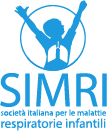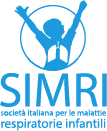Author: Roberto Grandinetti, MD, Scuola di Specializzazione in Pediatria, Ospedale dei Bambini ‘Pietro Barilla’, Università degli Studi di Parma;
Valentina Fainardi, MD, PhD, Clinica Pediatrica, Ospedale dei Bambini ‘Pietro Barilla’, Università degli Studi di Parma
Engaging in sports and regular physical activity has overwhelmingly positive effects at every age and is a fundamental part of a healthy lifestyle. Physical activity strengthens the respiratory system and improves overall health – even for individuals with asthma. In fact, exercise and sports can help manage asthma and reduce symptoms over time. The only essential rule if you have asthma and want to be physically active is to keep your asthma well-controlled. Still not convinced? Look up the testimonies of numerous Olympic athletes, soccer players, skiers, and more who have asthma and compete at the highest levels! If you take a moment to read through this article, we’ll also share a few helpful “tips and tricks” to reduce or even prevent the unpleasant symptoms of this condition during physical activity—proving that yes, even people with asthma can run and be active.
What is Exercise-Induced Bronchoconstriction?
In cases of asthma triggered by physical exertion, the airways become irritated and narrow during or shortly after intense exercise – typically within 5–10 minutes after stopping – causing typical asthma symptoms, including:
- Shortness of breath
- Coughing
- Wheezing
- Chest tightness
- Fatigue during exercise
- Difficulty keeping up with others
In recent years, the term exercise-induced bronchoconstriction (EIB) has gained traction. It describes virtually the same symptoms, but in people who do not have chronic asthma. This phenomenon is estimated to affect 10–15% of the general population and over 90% of individuals with asthma. It is believed that the relationship between exercise and asthma may be due to airway cooling from increased ventilation during physical effort. Exercise can also lead to dehydration of the respiratory tract, triggering muscle contraction and excess mucus production in the bronchi.
Common Triggers of Exercise-Induced Asthma
Many triggers of exercise-induced asthma have been identified. They vary from person to person, and an individual may have multiple triggers at once, including:
- Cold or dry air;
- Air pollution;
- Pollen or mold;
- Volatile chemicals (e.g., air fresheners, smoke, chlorine in pools, substances used in ice rinks);
- Respiratory infections or other lung conditions;
- High-intensity endurance sports.
How Is Exercise-Induced Asthma Diagnosed?
Diagnosis should begin with a specialized medical consultation. A thorough medical history, combined with resting spirometry and exercise challenge testing, can guide the clinician toward a diagnosis. Skin prick tests can also help identify sensitivities to airborne allergens (though not all potential allergens can be tested). Sometimes, what appears to be exercise-induced asthma may in fact stem from other respiratory or cardiac conditions.
Other differential diagnoses include:
- Poor physical conditioning or overexertion relative to one’s fitness level;
- Other respiratory or cardiovascular disorders;
- Exercise-induced laryngeal obstruction (EILO): characterized by a high-pitched sound on inspiration, common among athletes and teenagers. Unlike asthma, EILO does not respond to asthma medications.
Best Sports for Individuals with Exercise-Induced Asthma
There is no single “best” sport for people with asthma. What matters is knowing your personal triggers and choosing activities accordingly. For instance:
- Winter sports can be more demanding due to cold, dry air.
- Swimming is generally well-tolerated thanks to the warm, humid air around pools, but chlorine and additives can trigger symptoms.
In all cases, physical activity should be approached gradually, with increasing intensity and duration over time. If you have asthma, work with your doctor—and possibly a trainer—to build a safe training plan and avoid excessive strain.
How to Prevent and Relieve Exercise-Induced Asthma During Workouts
Key precautions include:
- Always keep your asthma inhaler nearby (as prescribed);
- Inform coaches or teammates about your asthma so they can help in case of an episode;
- Identify your personal triggers;
- Take pre-exercise medication if recommended;
- Stick to prescribed daily controller therapy, if applicable;
- Do a proper warm-up before exercising;
- Do ool-down exercises after your workout.
Four Common Triggers of Exercise-Induced Asthma (And How to Address Them)
- Cold air: Try wearing a scarf or face mask that covers your mouth and nose. Breathing through the nose helps warm and humidify the air.
- Air pollution: Avoid outdoor activities when pollution levels are high. Check air quality indexes via apps, websites, or media. Late morning and afternoon are often the worst times for outdoor exercise.
- Pollen or mold allergies: Track environmental levels and avoid outdoor sports when counts are high.
- Extreme weather or allergen levels: If conditions are unfavorable, opt for indoor workouts or adjust the intensity and duration of your outdoor training.
Long-Term and Short-Term Medications for Managing Exercise-Induced Asthma
Exercise-induced asthma can be effectively managed with the correct use of prescribed medication. If you’re unsure about your treatment plan or inhaler technique, consult your doctor. When symptoms occur during or after exercise – or if you’re diagnosed with EIB – you may need a short-acting medication beforehand. Three main types are:
- Short-acting bronchodilators, such as salbutamol, taken 15–30 minutes before exercise.
- Corticosteroid anti-inflammatories, such as beclomethasone, budesonide, or fluticasone.
- Non-steroidal anti-inflammatories, such as montelukast.
Summary of Medication Types:
- Bronchodilators: Relax airway muscles and open the airways. They come in short-acting (e.g., salbutamol) and long-acting forms. The short-acting type should be taken 15–30 minutes before exercise and lasts 2–4 hours. If symptoms occur despite prior use, it can be taken again as a “rescue” medication.
- Anti-inflammatory drugs: Reduce airway swelling. These include corticosteroids and leukotriene receptor antagonists like montelukast. They are used regularly as “controller medications.” Effects may take time to appear. If you experience symptoms more than twice a week during the day or at least twice a month at night, discuss a controller medication with your doctor.
Warm-Up and Cool-Down Exercises: Essential for Managing Exercise-Induced Asthma
- Warm-up (5–10 minutes) before exercise can reduce the likelihood of asthma symptoms. A gradual walk that increases in pace is often sufficient.
- Cool-down (5–10 minutes) after exercise, such as light walking or stretching, can help prevent post-exercise symptoms.
What to Do If Asthma Symptoms Appear During Physical Activity
Even if your asthma is well-controlled and you took a bronchodilator beforehand, symptoms may still occur. If this happens:
- Reduce intensity of the activity immediately.
- If symptoms persist or worsen, use your short-acting bronchodilator again (e.g., salbutamol), even if it was taken before the workout.
- Consider keeping a symptom diary to track how often you use rescue medication and discuss it regularly with your doctor.
Exercise-Induced Asthma in Children
To promote good health, the World Health Organization (WHO) recommends that children engage in at least 60 minutes of aerobic activity per day. Leading an active lifestyle is enough to reach this goal of well-being. With time and dedication, children can build strong fitness and enjoy better health – even with asthma.
No metadata found.



